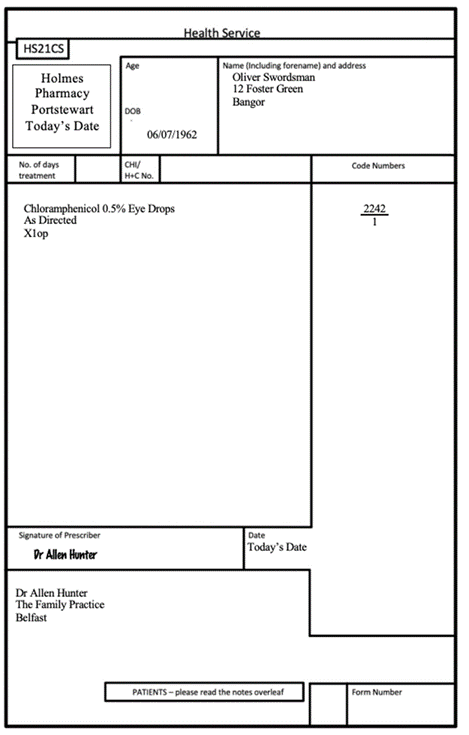
In this scenario, the student is expected to counsel a patient who is about to start a new medicine for their condition. Their role is to provide information to the student and check for patient understanding.
Please ensure that this scenario and mark scheme aligns with the most up-to-date guidelines from the UK NICE and the BNF when using it for your OSCE assessment.
You will need a student pharmacist and an actor for this OSCE Scenario.
Eye Infections
You are the pharmacist. You have been asked to counsel a patient who has recently been initiated on a new medication. You are expected to answer any questions appropriately and provide relevant advice.
The medicine has been dispensed, checked and is ready to be given out. You will be handing out the medication. You may wish to verify who you are speaking with.
To do
You have 8 minutes.
You have access to the Patient Information Leaflet.
Link to the Patient Information Leaflet (EMC, 2024):
https://www.medicines.org.uk/emc/product/427/smpc
The Prescription:

You are the patient.
Opening Statement: “Hello, this medication is new for me. I was wondering if you could tell me about it in detail.”
Patient Details:
Name: Oliver Swordsman (Ol-iv-er, Swords-man)
DOB: 06/07/62
Address: 12 Foster Green
Details for the Actor:
The pharmacist may check your understanding of what is being said throughout. Make sure to state what they have said or ask them to clarify any information you deem relevant. You should nod and agree with their points throughout to prompt them to continue to speak.
|
|
Management and Advice |
|
|
8 |
Clarify medication's purpose. [1] {This is an antibiotic eye drop which kills bacteria and is commonly used to treat eye infections .} |
Patient Education, Knowledge
|
|
9 |
Detail correct dose, frequency. [1]
{You prescriber has stated to use the eye drops as directed. The patient information leaflet states - The recommended dose is two drops applied to the affected eye(s) every three hours. Use during waking hours only. Continue treatment at least 48 hours after the eye appears normal, or as directed by your doctor.} |
|
|
10 |
Any special usage instructions. [1]
{Store in a refrigerator at a temperature between 2-8 degrees celsius. Discard the bottle 28 days after opening even if there is solution remaining.} |
Patient Education, Knowledge
|
|
11 |
Explain common side effects. [1]
{Some people may find their eyes sting or their sight is blurred immediately after use. These should wear off after a short period of time.} |
Patient Education, Knowledge
|
|
13 |
Explain overdose steps. [1]
{If you accidently apply too much drops, you should wash your eye with plenty of water, if any painful symptoms continue after this, you should tell your doctor immediately.} |
Patient Safety, Patient Education
|
|
14 |
Outline missed dose action. [1]
{Apply the drops as soon as you remember. However, if it is almost time for your next dose, do not double your dose and carry on with the normal schedule dose.} |
Patient Safety, Patient Education
|